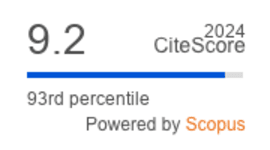COVID-19: Understanding the New Variants of Concern
DOI:
https://doi.org/10.36877/pmmb.a0000282Abstract
The novel coronavirus, SARS-CoV-2, part of the Coronaviridae family, was discovered in December 2019 in China. World Health Organization named it COVID-19 and by March 2020, it had spread worldwide, causing a global pandemic. Despite continuous efforts to prevent the spread of the virus, the virus seemed always to be a step ahead of humankind as it rapidly evolved to produce new variants. These variants have higher transmissibility than the original virus and were responsible for new waves of infections. The first variant was Alpha, followed by the discovery of Beta, Gamma, Delta, and Omicron, being the latest variant of concern. Although vaccines were distributed worldwide to reduce the severity of the disease when infected with SARS-CoV-2, the emergence of new variants raised doubts about the efficacy of the available vaccines. Studies showed a decrease in neutralizing antibodies during infection with XBB and BQ subvariants compared to infections caused by other variants. Fortunately, early evidence shows that the mRNA vaccines are still effective against the current circulating Omicron sublineages of the coronavirus. Nevertheless, continuous genomic surveillance of the coronavirus is still important to detect any new variants of concern to assess their potential to threaten public health. The efficacy of vaccines and treatment options available against the latest circulating variant of SARS-CoV-2 should also be periodically evaluated. This ensures that the treatment and vaccines used are safe and effective against the virus to protect the public from another health crisis.
Downloads
Published
How to Cite
Issue
Section
License
Copyright (c) 2022 Ke-Yan Loo, Vengadesh Letchumanan

This work is licensed under a Creative Commons Attribution-NonCommercial 4.0 International License.
Author(s) shall retain the copyright of their work and grant the Journal/Publisher right for the first publication with the work simultaneously licensed under:
Creative Commons Attribution-NonCommercial 4.0 International (CC BY-NC 4.0). This license allows for the copying, distribution and transmission of the work, provided the correct attribution of the original creator is stated. Adaptation and remixing are also permitted.

This broad license intends to facilitate free access to, as well as the unrestricted reuse of, original works of all types for non-commercial purposes.
The author(s) permits HH Publisher to publish this article that has not been submitted elsewhere.



.png)

.jpg)
